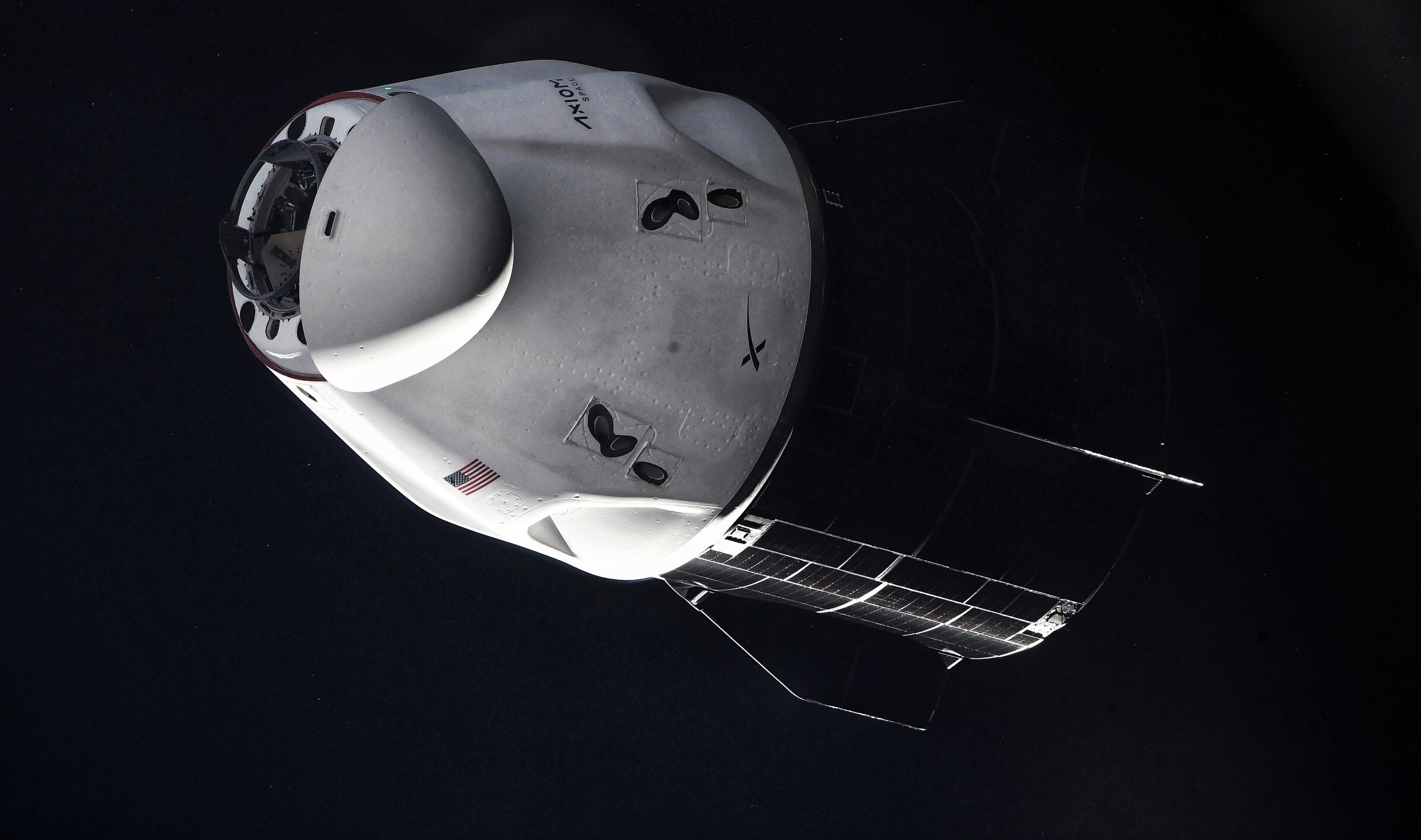
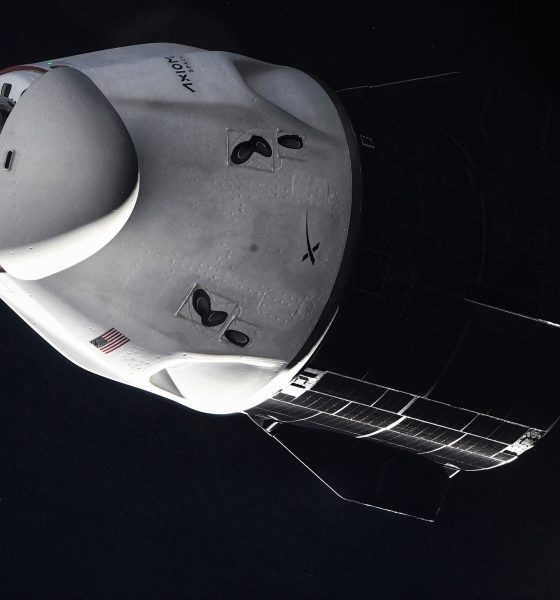
News
SpaceX director says six Crew Dragon launches per year is a sustainable goal
A senior manager says that SpaceX could sustainably launch six or more Crew Dragons per year if the market for private missions grows large enough to demand it.
Benji Reed, Senior Director of Human Spaceflight Programs, offered his thoughts on the matter in a press conference following SpaceX’s successfully recovery of Crew Dragon and four private Axiom-1 astronauts from the Gulf of Mexico, marking the end of the first all-private mission to the International Space Station (ISS). Asked what kind of launch cadence SpaceX believes it could handle going forward, Reed stated that he “would love to see…half a dozen crew flights…or more” per year and believes that “SpaceX can sustain that [pace] if there’s a market for it.”
The question is an important one after a SpaceX executive confirmed to Reuters earlier this year that the company has already ended production of Crew Dragon after building just a handful of reusable capsules. With that fleet of four spacecraft, it hasn’t been clear how many crewed missions SpaceX can – or thinks it can – launch each year. To some extent, it’s long been expected that SpaceX would try to replace both Falcon rockets and Dragon spacecraft with Starship as soon as the next-generation fully-reusable rocket is ready.
However, without major redesigns or a new and heavily modified variant of the rocket’s upper stage, it’s difficult to imagine NASA transitioning its International Space Station astronaut launches from Dragon to Starship anytime soon. Even though Starship could feasibly revolutionize spaceflight and NASA has already contracted with SpaceX to build a version of the rocket to land NASA astronauts on the Moon, the one thing it’s hard to imagine the space agency ever compromising on is safety. Crew Dragon has a built-in launch escape system that allows the capsule to almost instantly whisk astronauts away from a failing rocket at any point before or during a launch.
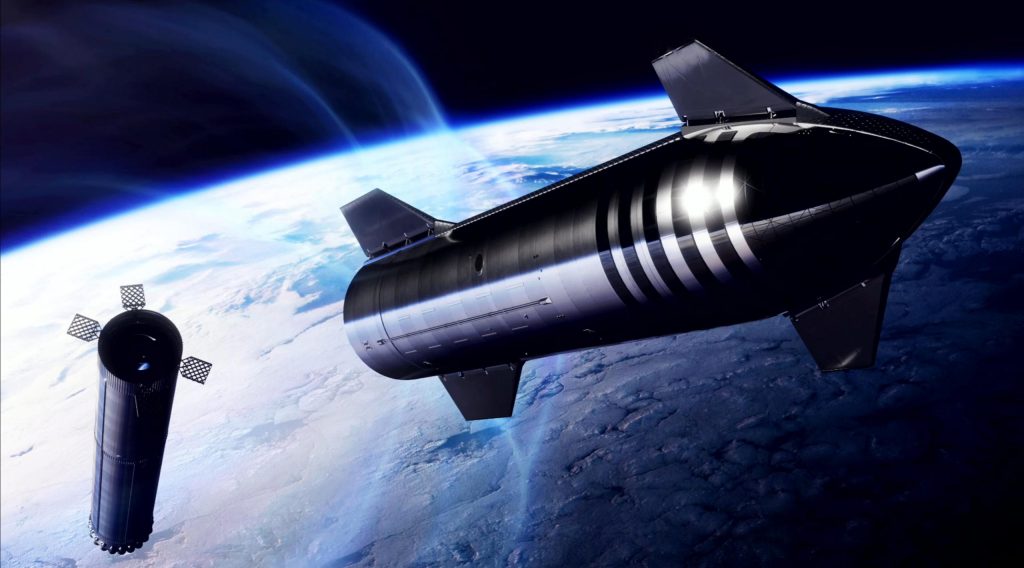
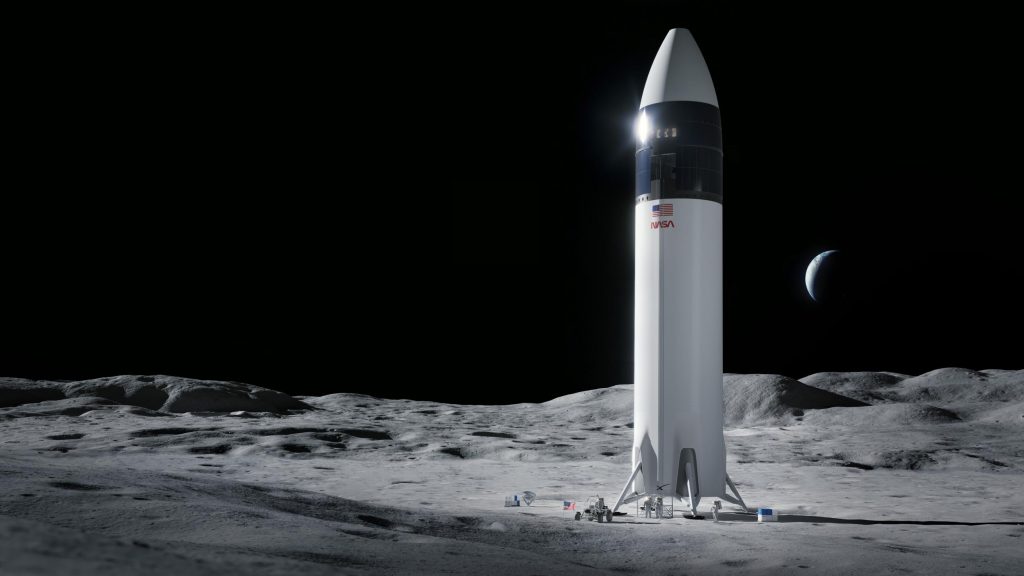
Starship has no such escape system and SpaceX has no apparent plans to develop a variant of the crew-carrying ship with a comparable abort system. Because the Starship rocket’s second stage is the orbital spacecraft, crew cabin, and reentry vehicle, it simply isn’t possible for the current design of the next-generation vehicle to match the theoretical safety of Falcon 9 and Crew Dragon. CEO Elon Musk has discussed increasing the number of engines on Starship to allow it to escape from a failing booster but that would leave astronauts with no way to escape from the upper stage itself.
On top of Dragon’s fundamentally superior safety capabilities, Falcon 9 also has an extraordinary record of 125 consecutively successful launches. If NASA wouldn’t let Dragon launch its astronauts on Falcon 9 without an active escape system, it’s hard to imagine how many consecutive launch successes Starship would need before the agency would even think about retiring Crew Dragon.
This is all to say that SpaceX is likely going to be stuck operating Crew Dragon for the indefinite future as long as it’s too stubborn to develop a true launch escape system for Starship. Even though the recently announced Polaris Program aims to culminate in the “first flight of Starship with humans on board,” it’s likely that most private SpaceX crew launch customers will follow NASA’s lead.
Thankfully, even with four Crew Dragon capsules, it’s likely that SpaceX can manage significantly more than six crewed missions per year if the demand is there and commercial passengers – mirroring NASA – aren’t ready to risk flying on Starship. Already, SpaceX has successfully launched the same Crew Dragon capsule to orbit twice in 137 days. If SpaceX continues flying back-to-back NASA crew transport missions while Boeing’s Starliner inches through qualification, that will tie up two Dragons per year, limiting SpaceX to two launches for NASA and around four to five private astronaut launches per year.
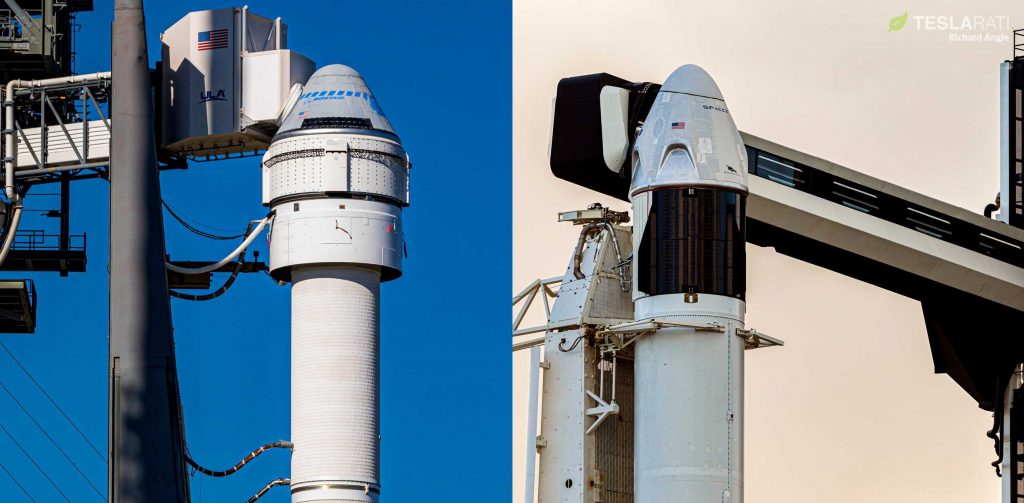
Assuming Starliner finally reaches operational readiness and begins supporting every other NASA crew launch, SpaceX could feasibly launch one NASA mission and seven private missions (lasting up to two weeks each) per year by the end of 2023. Additionally, if SpaceX can improve Crew Dragon turnaround to 120 days, the fleet could support 10 crew launches per year. 90 days? 13 launches per year. Private missions to the ISS would add plenty of schedule constraints, reducing the total number of opportunities, but that’s a minor problem in comparison.
The only lingering technical concern, then, is the longevity of SpaceX’s Crew Dragon capsule fleet. SpaceX and NASA have initially certified each capsule for five missions, but after Crew-4’s April 27th launch, the fleet has already eaten up 7 of the 20 flights that limit permits. Assuming no additional demand for private launches, the remaining 13 ‘certified’ flights might last SpaceX through 2024. Sooner than later, with NASA’s blessing, it will either need to significantly increase the number of missions each capsule is certified to fly, build new capsules, or find a way to transition to Starship.

Elon Musk
Elon Musk’s X will start using a Tesla-like software update strategy
The initiative seems designed to accelerate updates to the social media platform, while maintaining maximum transparency.

Elon Musk’s social media platform X will adopt a Tesla-esque approach to software updates for its algorithm.
The initiative seems designed to accelerate updates to the social media platform, while maintaining maximum transparency.
X’s updates to its updates
As per Musk in a post on X, the social media company will be making a new algorithm to determine what organic and advertising posts are recommended to users. These updates would then be repeated every four weeks.
“We will make the new 𝕏 algorithm, including all code used to determine what organic and advertising posts are recommended to users, open source in 7 days. This will be repeated every 4 weeks, with comprehensive developer notes, to help you understand what changed,” Musk wrote in his post.
The initiative somewhat mirrors Tesla’s over-the-air update model, where vehicle software is regularly refined and pushed to users with detailed release notes. This should allow users to better understand the details of X’s every update and foster a healthy feedback loop for the social media platform.
xAI and X
X, formerly Twitter, has been acquired by Elon Musk’s artificial intelligence startup, xAI last year. Since then, xAI has seen a rapid rise in valuation. Following the company’s the company’s upsized $20 billion Series E funding round, estimates now suggest that xAI is worth tens about $230 to $235 billion. That’s several times larger than Tesla when Elon Musk received his controversial 2018 CEO Performance Award.
As per xAI, the Series E funding round attracted a diverse group of investors, including Valor Equity Partners, Stepstone Group, Fidelity Management & Research Company, Qatar Investment Authority, MGX, and Baron Capital Group, among others. Strategic partners NVIDIA and Cisco Investments also continued support for building the world’s largest GPU clusters.
News
Tesla FSD Supervised wins MotorTrend’s Best Driver Assistance Award
The decision marks a notable reversal for the publication from prior years, with judges citing major real-world improvements that pushed Tesla’s latest FSD software ahead of every competing ADAS system.

Tesla’s Full Self-Driving (Supervised) system has been named the best driver-assistance technology on the market, earning top honors at the 2026 MotorTrend Best Tech Awards.
The decision marks a notable reversal for the publication from prior years, with judges citing major real-world improvements that pushed Tesla’s latest FSD software ahead of every competing ADAS system. And it wasn’t even close.
MotorTrend reverses course
MotorTrend awarded Tesla FSD (Supervised) its 2026 Best Tech Driver Assistance title after extensive testing of the latest v14 software. The publication acknowledged that it had previously criticized earlier versions of FSD for erratic behavior and near-miss incidents, ultimately favoring rivals such as GM’s Super Cruise in earlier evaluations.
According to MotorTrend, the newest iteration of FSD resolved many of those shortcomings. Testers said v14 showed far smoother behavior in complex urban scenarios, including unprotected left turns, traffic circles, emergency vehicles, and dense city streets. While the system still requires constant driver supervision, judges concluded that no other advanced driver-assistance system currently matches its breadth of capability.
Unlike rival systems that rely on combinations of cameras, radar, lidar, and mapped highways, Tesla’s FSD operates using a camera-only approach and is capable of driving on city streets, rural roads, and freeways. MotorTrend stated that pure utility, the ability to handle nearly all road types, ultimately separated FSD from competitors like Ford BlueCruise, GM Super Cruise, and BMW’s Highway Assistant.
High cost and high capability
MotorTrend also addressed FSD’s pricing, which remains significantly higher than rival systems. Tesla currently charges $8,000 for a one-time purchase or $99 per month for a subscription, compared with far lower upfront and subscription costs from other automakers. The publication noted that the premium is justified given FSD’s unmatched scope and continuous software evolution.
Safety remained a central focus of the evaluation. While testers reported collision-free operation over thousands of miles, they noted ongoing concerns around FSD’s configurable driving modes, including options that allow aggressive driving and speeds beyond posted limits. MotorTrend emphasized that, like all Level 2 systems, FSD still depends on a fully attentive human driver at all times.
Despite those caveats, the publication concluded that Tesla’s rapid software progress fundamentally reshaped the competitive landscape. For drivers seeking the most capable hands-on driver-assistance system available today, MotorTrend concluded Tesla FSD (Supervised) now stands alone at the top.
News
Elon Musk’s Grokipedia surges to 5.6M articles, almost 79% of English Wikipedia
The explosive growth marks a major milestone for the AI-powered online encyclopedia, which was launched by Elon Musk’s xAI just months ago.

Elon Musk’s Grokipedia has grown to an impressive 5,615,201 articles as of today, closing in on 79% of the English Wikipedia’s current total of 7,119,376 articles.
The explosive growth marks a major milestone for the AI-powered online encyclopedia, which was launched by Elon Musk’s xAI just months ago. Needless to say, it would only be a matter of time before Grokipedia exceeds English Wikipedia in sheer volume.
Grokipedia’s rapid growth
xAI’s vision for Grokipedia emphasizes neutrality, while Grok’s reasoning capabilities allow for fast drafting and fact-checking. When Elon Musk announced the initiative in late September 2025, he noted that Grokipedia would be an improvement to Wikipedia because it would be designed to avoid bias.
At the time, Musk noted that Grokipedia “is a necessary step towards the xAI goal of understanding the Universe.”
Grokipedia was launched in late October, and while xAI was careful to list it only as Version 0.1 at the time, the online encyclopedia immediately earned praise. Wikipedia co-founder Larry Sanger highlighted the project’s innovative approach, noting how it leverages AI to fill knowledge gaps and enable rapid updates. Netizens also observed how Grokipedia tends to present articles in a more objective manner compared to Wikipedia, which is edited by humans.
Elon Musk’s ambitious plans
With 5,615,201 total articles, Grokipedia has now grown to almost 79% of English Wikipedia’s article base. This is incredibly quick, though Grokipedia remains text-only for now. xAI, for its part, has now updated the online encyclopedia’s iteration to v0.2.
Elon Musk has shared bold ideas for Grokipedia, including sending a record of the entire knowledge base to space as part of xAI’s mission to preserve and expand human understanding. At some point, Musk stated that Grokipedia will be renamed to Encyclopedia Galactica, and it will be sent to the cosmos.
“When Grokipedia is good enough (long way to go), we will change the name to Encyclopedia Galactica. It will be an open source distillation of all knowledge, including audio, images and video. Join xAI to help build the sci-fi version of the Library of Alexandria!” Musk wrote, adding in a later post that “Copies will be etched in stone and sent to the Moon, Mars and beyond. This time, it will not be lost.”








